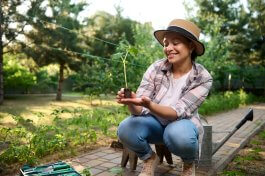
I hope you’re excited as we gear up for another fruitful year of food gardening! Here at Food Gardening Network, your feedback is invaluable as we strive to create content that truly resonates with your interests and needs. A couple of months ago, we sent out a survey to gather insights into your 2024 planting plans, and we were thrilled to receive 286 responses—thank you for your participation!
As we eagerly anticipate the upcoming gardening season, we’re planning to tailor our content to match your specific interests and preferences. One question we asked in the survey was about your planting intentions for 2024—whether you’re planning to plant more, less, or about the same as you did last year. The insights gleaned from your responses were fascinating and incredibly valuable in understanding the trends shaping your gardening habits.
We believe that sharing this data with you could provide valuable insights that might inform your own planting decisions. So, without further ado, we’re excited to delve into the findings and explore how they might inspire your gardening endeavors in the coming year. Below I’ll dive into the survey questions and analyze the results.
1. What will you be planting in 2024?
For this question, gardeners could check as many fruits, vegetables, and herbs as they wanted. In our list of 71 options, 83% chose tomatoes! The results of this first question was very relatable to me, is it to you? Leading the pack behind tomatoes we have bell peppers (and their cousin hot peppers at #15), cucumbers, basil, green beans, lettuce, onions, carrots, peas and potatoes all in the top 10. This feels very representative of what I feel is a common garden with no big surprises. Also no surprises that wheat and quinoa are at the bottom of the list. Cherries are at the bottom of this list, but in the top 10 of a chart further down the list – interesting to say the least!
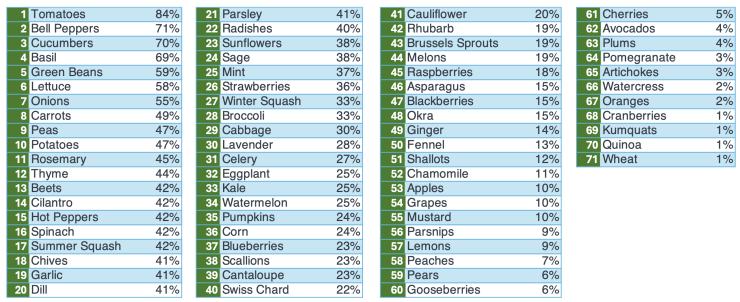
2. What did you plant last year, that you won’t be planting this year?
Once again, gardeners had the delightful task of checking off as many fruits, vegetables, and herbs as they pleased—or rather, as they didn’t desire! Interestingly, this list bears a striking resemblance to the one above in many respects. However, a closer look at the percentages reveals a notable difference: fewer people opted out of planting compared to those who expressed intentions to plant. In fact not only did people select less plants in this question, but 82 respondents skipped it all together and didn’t select any, assuming there were none they plan to skip.
Among the “things to note” on this list was asparagus, ranking high at #13 for plants not to be planted and significantly lower at #46 for those slated for cultivation. Could this be attributed to its perennial nature? The data doesn’t reveal any other glaring patterns. My statistically insignificant guess on what this data means is that the plants most popular to plant are naturally also the most popular to skip simply because they are the most planted overall.
One can’t help but raise an eyebrow at the relatively low placement of corn on this list, considering the considerable effort it takes the average home gardener to pollinate it. Nevertheless, onward with the corn-growing endeavors, my fellow gardeners!
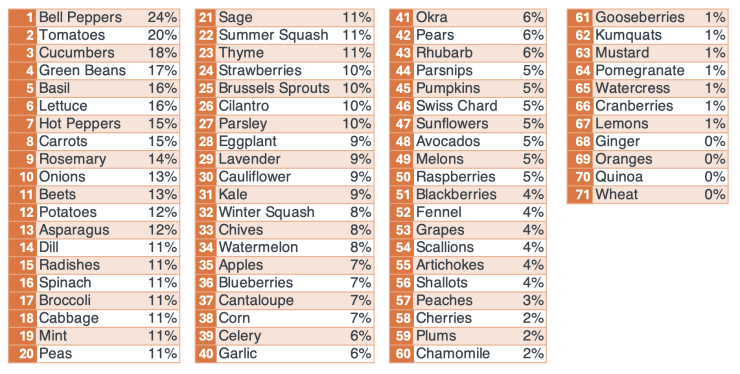
3. What is your #1 favorite fruit to plant?
The top 10 fruits that our community loves to plant are: Strawberries, Blueberries, Raspberries, Watermelon, Blackberries, Rhubarb, Melons, Cantaloupe, Apples, and Cherries. These fruits offer a blend of delicious flavors, ease of cultivation, and nutritional benefits, reflecting an interest in traditional favorites and emerging trends.
Strawberries claim the lead, likely due to their versatility, compact growth habits suitable for various garden sizes, and prolific fruiting. Blueberries and raspberries follow closely, prized for their antioxidant-rich berries and relatively low maintenance requirements. Watermelon, with its refreshing sweetness and suitability for warmer climates, secures a prominent spot, while blackberries and rhubarb offer a touch of nostalgia but they’re also easy to grow! Melons, including cantaloupe, appeal to growers for their juicy rewards during the summer months. Apples and cherries, classic orchard staples, round out the list, cherished for their flavor, cooking potential, and bountiful harvests. This selection reflects a desire among gardeners to cultivate fruits that satisfy the taste buds and thrive in diverse growing conditions, making them ideal choices for home gardens and small-scale farming ventures in 2024.

4. What is your #1 favorite vegetable to plant?
In the realm of gardeners’ preferences for 2024, the top 10 vegetables reflect a delightful array of options, each adding its own flavor and flair to the garden patch. Tomatoes, bell peppers, green beans, cucumbers, hot peppers, lettuce, peas, potatoes, eggplant, and summer squash all come out on top. It’s no surprise that tomatoes (yes we know they are technically a fruit) are a favorite, representing 43% out of the 37 possible options we offered in the survey. Behind tomatoes, bell peppers and hot peppers are both on the list, showing how much gardeners love this versatile plant. While the list of fruits seemed to represent more easy-to-grow varietals, the vegetables seem to represent more of the best-tasting vegetables, with lots of varietals to try, which are quite common as side dishes!
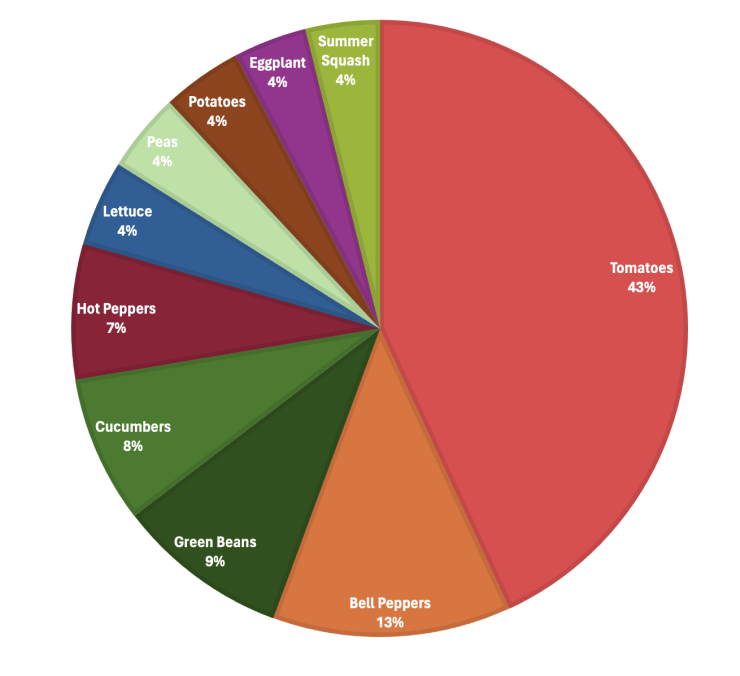
5. What is your #1 favorite herb to plant?
It comes as no surprise that the top 10 herbs to plant are those that grow easily in most planting zones, and are common spices used in cooking: Basil, Cilantro, Mint, Rosemary, Dill, Chives, Parsley, Lavender, Thyme and Sage. Basil is a must-have in tomato dishes, and rosemary is harmonious with steak, potatoes, and butter – the all-American meal. These herbs offer a burst of flavor to dishes while adding fragrance and freshness to the garden. Cilantro, mint, and dill infuse meals with citrusy zest or subtle sweetness, while chives and parsley add a touch of brightness to countless recipes. Lavender attracts pollinators with its calming scent, while thyme and sage bring depth to savory dishes. With their abundant benefits and undeniable charm, these herbs exemplify the joys of homegrown goodness and culinary creativity. These results are certainly the least surprising of all!

6. Do you plan to plant more, less, or about the same as last year?
About the same amount of gardeners think they’ll plant about the same or more this year. I am surprised that so few chose less, because I always think I’ll plant less this year… but inevitably plant way more!
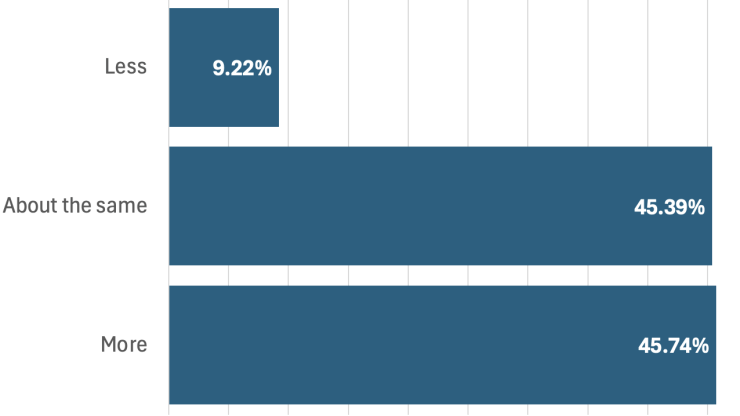
7. What impacts your choice to stop planting something?
In this survey, gardeners were asked to select their top three reasons for discontinuing the planting of certain crops. The most common response, chosen by nearly 43% of participants, cited dissatisfaction with the yield of the plant in the previous year. Following closely behind is the concern over the time and energy required for maintenance—a sentiment many can empathize with. The third most cited reason is the quality of the plant from the prior season, although this was nearly tied with concerns about space consumption and inadequate sunlight. Surprisingly, the spread of disease didn’t rank as highly as expected—for me, disease prevention is my #1 concern when replanting!

8. How happy were you with last year’s garden?
Notably, almost 42% of our gardeners express satisfaction with their garden, while approximately 15% report feeling very satisfied. Yet, as any seasoned gardener knows, each year brings its own unique challenges and triumphs. That’s the beauty of gardening—embracing the opportunity to start afresh and explore new endeavors with every season.
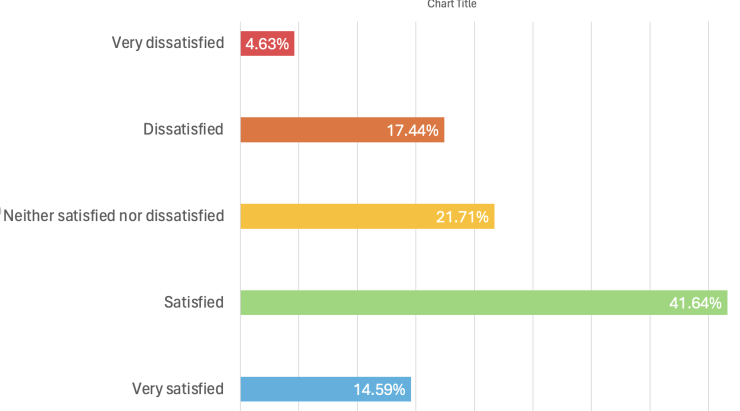
9. What was your biggest challenge last year?
Weather proved to be the primary hurdle for 40% of gardeners last year—a sentiment I certainly share! In my neck of the woods, incessant summer rains wreaked havoc on the tomato harvest, making it a tough season indeed. Following closely behind, 22% of gardeners cited time constraints as their biggest challenge—a struggle that likely resonates with many of us. In the “other” category, respondents highlighted issues ranging from pesky pests to concerns about soil quality and physical limitations in gardening. These valuable insights will undoubtedly inform next year’s survey as we strive to better understand and address the diverse challenges faced by gardeners.
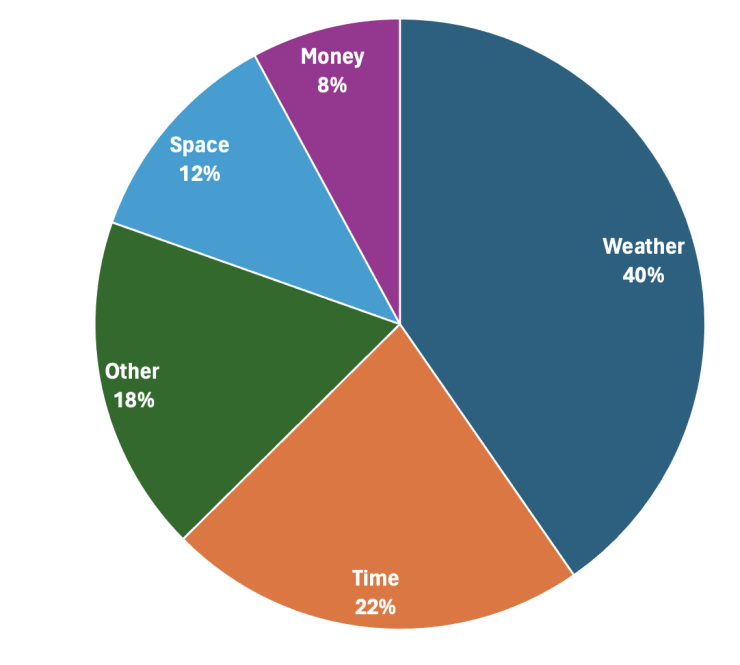
I’d love to gather your thoughts on the results of this survey. I find this sort of data so fascinating! Let me know what you think in the comments.


 Previous
Previous


I CAN NO LONGER GARDEN DUE TO HEALTH REASONS BUT MAN DO I MISS IT!!!!!!!!!!!!!
Deer- rabbits-squirrels- ground hogs ate more than the family. Discouraging